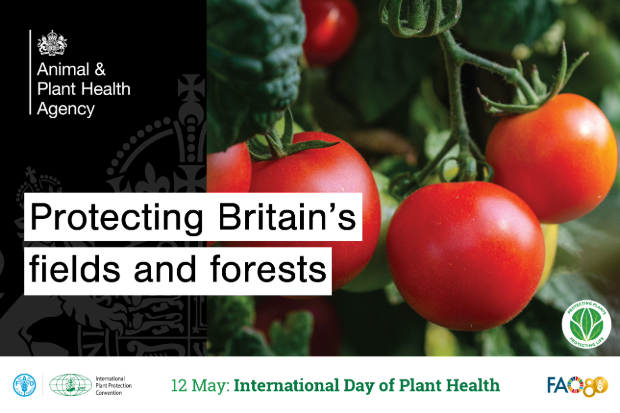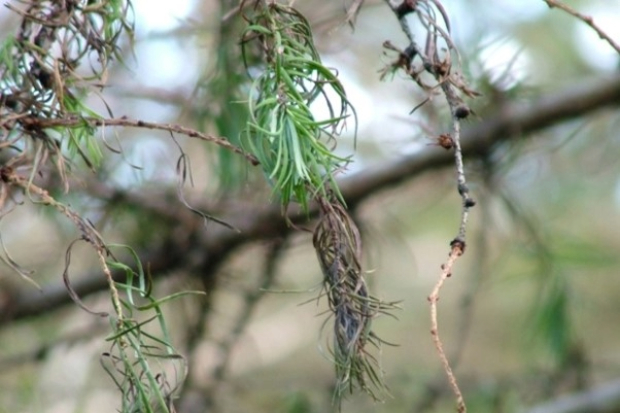
It started in a commercial greenhouse on the edge of South East England. A grower supplying fresh tomatoes to major supermarkets noticed something troubling - the tomatoes looked mottled and discoloured, and the fruits were misshapen. At first, they thought it might be a nutrient issue or a common virus. But tests confirmed their fears: Tomato brown rugose fruit virus (ToBRFV) had made it to their crop.
Highly contagious and difficult to control, ToBRFV can slash tomato yields by up to 70%. In the United Kingdom (UK), this has led to losses of tens to hundreds of thousands of pounds, and the greenhouse complexes have had to be completely disinfected to prevent further spread. In Florida, a major tomato producing state in the United States (US), the virus is estimated to put at risk an industry with an annual turnover of $262 million, further underscoring the need to prevent introduction and take swift action when found.
Meanwhile, in a woodland near Devon, a ranger walked among dead and dying larch trees, many with stem bleeds. They knew what it was before the diagnostic results came back: Phytophthora ramorum - a destructive plant pathogen responsible for ‘Sudden Larch Death’ - was on the move again, silently reshaping landscapes across the UK. In a five-year period (2009-2014) the UK government spent £21 million on managing and slowing the spread of P. ramorum disease.

Two very different environments - a high-tech glasshouse and a commercial forest - yet they illustrate a growing crisis. Across the UK, the introduction of exotic plant pathogens is becoming more common, and these are often not noticed until they spread and start to cause damage, by which time, it is often too late.
From wheat rust and potato blight on farms to Dutch elm disease, Phytophthora disease, and ash dieback in forests, the UK is facing a growing plant health crisis. Agriculture, horticulture and the natural environment are under an increasing threat from pests and diseases, driven by a range of accelerating factors:
- Climate change is shifting disease patterns, making it easier for pathogens to establish, but making outbreaks harder to predict;
- Fungicide and insecticide resistance is increasing, making traditional control methods less effective;
- Global plant trade and people movement are introducing new pathogens, some of which have no natural enemies in the UK.
Why genomics matters now more than ever
Traditional methods of disease detection rely on visible signs. By the time they are visible, pathogens like ToBRFV and P. ramorum have often already spread.
This is where the Genomics of Animal and Plant Disease Consortium (GAP-DC) comes in. Led by APHA, in partnership with key organisations across animal and plant health, scientists in the GAP-DC are pioneering new approaches to help us better understand and monitor invasive pathogens of terrestrial and aquatic animals, plants and ecosystems. GAP-DC is integrating both targeted and wide-ranging genomic techniques to enhance early pathogen detection, rapid response and effective disease control.

Genomics can now be used to help track, predict and manage plant diseases in real time. Instead of relying solely on visual inspections or traditional diagnostics, genomic surveillance allows researchers to:
- Study the genomes of pathogens to allow us to understand more about pathogen population origins and movement in an outbreak;
- Detect pathogens in soil, water and air before symptoms appear;
- Map the spread of disease across farms and forests allowing for early interventions;
- Understand how resistance develops in pests and pathogens, helping to inform more effective control strategies.
Here is what that means in practice:
- For ToBRFV, we are working with scientists across Europe using genomics to trace infection pathways across the globe, identifying new variants and informing biosecurity measures;
- For P. ramorum, it could allow us to map future pathogen spread across Great Britain, enabling early interventions to reduce spread in vulnerable forests and parks.
Looking ahead: a smarter, genomics-driven response
In the near future, genomics, coupled with rapid tests, will allow us early detection and control of ToBRFV outbreaks, helping to limit its spread and reduce both the crop damage and economic losses.
For rangers, environmental DNA (eDNA, which is DNA found in environmental samples) monitoring in woodlands could reveal the presence of P. ramorum even before visual signs appear on trees. This would allow forest managers to better target containment zones, reroute public access, or prioritise at-risk areas for intervention.
These scenarios are not science fiction - they are exactly the kind of applied outcomes GAP-DC is actively working towards.
A future built on prevention, not reaction
Genomic surveillance is not just a tool for scientists – it is a game-changer for policymakers, farmers, foresters and land managers. By integrating this data into national plant health strategies, we can:
- Prevent devastating outbreaks before they escalate;
- Improve sustainable farming and forestry practices;
- Safeguard Britain’s biodiversity for future generations.

1 comment
Comment by https://www.hulktv247.com posted on
Fascinating to see how genomics is playing a vital role in protecting the UK’s natural landscapes. Harnessing cutting-edge science to detect and combat invasive species is a powerful step toward preserving biodiversity and ensuring the health of our ecosystems.